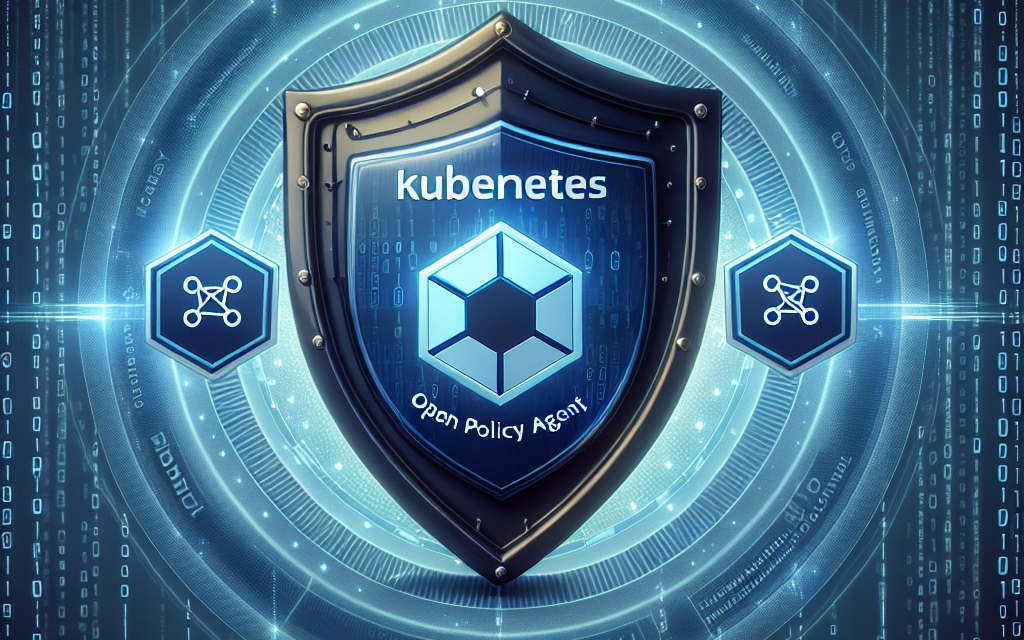In the fast-paced world of cloud-native infrastructure, securing Kubernetes clusters has become more critical than ever. As organizations increasingly rely on Kubernetes for their container orchestration needs, the necessity of robust security measures cannot be overstated. One of the most effective ways to enhance Kubernetes security is through the integration of the Open Policy Agent (OPA). In this article, we will explore how OPA can be utilized to enforce fine-grained access control policies in Kubernetes, thereby strengthening its security posture.
What is Open Policy Agent?
Open Policy Agent (OPA) is an open-source, general-purpose policy engine that provides unified authorization across various services and workflows. Implemented in a declarative way, OPA allows developers and security teams to express policies in a high-level language, Rego, which can then be enforced consistently throughout their systems.
Key Features of OPA:
- Decoupled Policy Management: OPA separates policy from application logic, enabling central management and easier policy updates.
- Fine-Grained Control: OPA allows for more granular policy enforcement, enabling organizations to specify who can access what resources under which conditions.
- Flexible Integration: OPA can be integrated with different systems and platforms, including Kubernetes, APIs, microservices, and more.
Why Integrate OPA with Kubernetes?
Kubernetes, while powerful and flexible, can pose security challenges in terms of resource access, configuration management, and compliance. Integrating OPA enhances Kubernetes security in several ways:
1. Centralized Policy Management
By using OPA, Kubernetes administrators can define and manage security policies in a centralized manner. This reduces the administrative overhead involved with configuring individual components and provides a consistent approach to policy enforcement across the entire cluster.
2. Dynamic Policy Enforcement
With OPA, you can create dynamic policies that evaluate real-time attributes of incoming requests. For instance, you can define rules that restrict access based on user roles, namespaces, or even the context of a request. This adaptability ensures that the security posture evolves with changing organizational needs.
3. Compliance and Audit Trails
OPA allows you to implement compliance checks directly within the Kubernetes control plane. This can include enforcing rules concerning RBAC (Role-Based Access Control), Pod Security Standards, and other security policies. Furthermore, OPA can log decision-making processes, creating a detailed audit trail that simplifies compliance reporting.
4. Policy as Code
Treating policy as code not only promotes automation but also supports version control, testing, and reuse. This approach enhances collaboration between development and security teams and encourages the adoption of best practices in policy definition and management.
Implementing OPA in Kubernetes
To implement OPA in a Kubernetes environment, follow these steps:
Step 1: Deploy OPA as a Sidecar or Gateway
You can deploy OPA as a sidecar container in your pod or as an admission controller, which intercepts requests before they reach the Kubernetes API server.
Step 2: Define Policies in Rego
Create Rego policies that align with your security requirements. For example, a policy could restrict certain users from deploying resources in sensitive namespaces.
Step 3: Register Policies with OPA
Once your policies are defined, register them with OPA. You can use REST APIs or configuration files depending on the chosen deployment method.
Step 4: Test and Iterate
Testing your policies is crucial. Use test cases to validate your OPA policies to ensure they work as intended and do not inadvertently block legitimate requests.
Step 5: Monitor and Adjust
Regularly monitor policy decisions and adjust them based on changing needs or security threats. OPA provides insights into policy enforcement that can help refine your approach continuously.
Conclusion
As Kubernetes adoption continues to grow, so do the challenges associated with securing these complex systems. By integrating Open Policy Agent, organizations can ensure a higher level of security, compliance, and operational efficiency. OPA’s ability to centralize policy management, enforce dynamic rules, and provide robust compliance tracking makes it an invaluable tool in the Kubernetes security arsenal.
For organizations looking to strengthen their Kubernetes security strategies, the integration of Open Policy Agent offers a comprehensive solution that addresses key vulnerabilities while promoting a culture of continuous improvement in security practices. Embracing this integration not only mitigates risks but also paves the way for innovative, secure cloud-native applications.
Feel free to reach out with your thoughts, or if you’d like to explore more about enhancing your Kubernetes security with OPA, let’s dive deeper into this essential topic!





